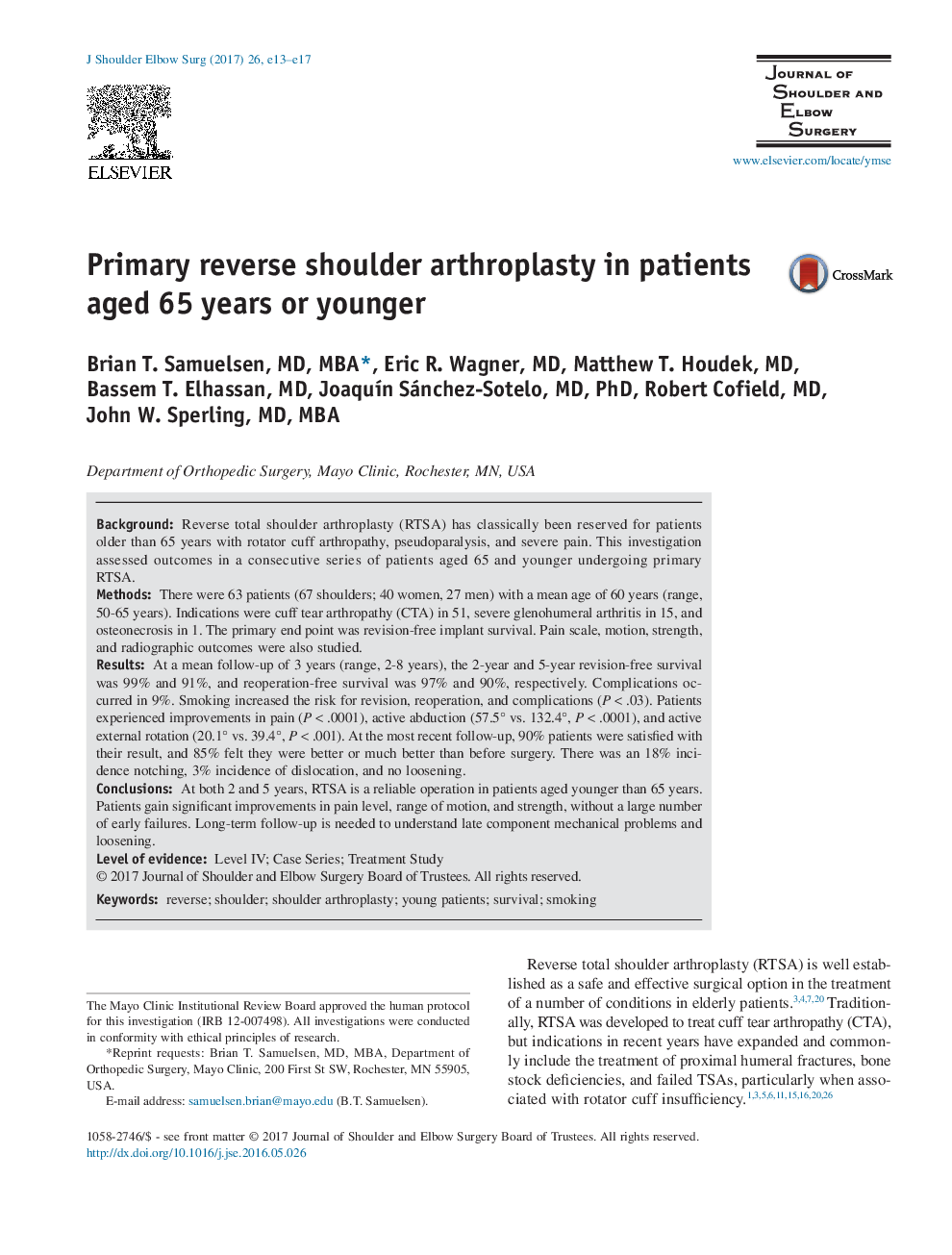| Article ID | Journal | Published Year | Pages | File Type |
|---|---|---|---|---|
| 5710579 | Journal of Shoulder and Elbow Surgery | 2017 | 5 Pages |
BackgroundReverse total shoulder arthroplasty (RTSA) has classically been reserved for patients older than 65 years with rotator cuff arthropathy, pseudoparalysis, and severe pain. This investigation assessed outcomes in a consecutive series of patients aged 65 and younger undergoing primary RTSA.MethodsThere were 63 patients (67 shoulders; 40 women, 27 men) with a mean age of 60 years (range, 50-65 years). Indications were cuff tear arthropathy (CTA) in 51, severe glenohumeral arthritis in 15, and osteonecrosis in 1. The primary end point was revision-free implant survival. Pain scale, motion, strength, and radiographic outcomes were also studied.ResultsAt a mean follow-up of 3 years (range, 2-8 years), the 2-year and 5-year revision-free survival was 99% and 91%, and reoperation-free survival was 97% and 90%, respectively. Complications occurred in 9%. Smoking increased the risk for revision, reoperation, and complications (Pâ<â.03). Patients experienced improvements in pain (Pâ<â.0001), active abduction (57.5° vs. 132.4°, Pâ<â.0001), and active external rotation (20.1° vs. 39.4°, Pâ<â.001). At the most recent follow-up, 90% patients were satisfied with their result, and 85% felt they were better or much better than before surgery. There was an 18% incidence notching, 3% incidence of dislocation, and no loosening.ConclusionsAt both 2 and 5 years, RTSA is a reliable operation in patients aged younger than 65 years. Patients gain significant improvements in pain level, range of motion, and strength, without a large number of early failures. Long-term follow-up is needed to understand late component mechanical problems and loosening.
